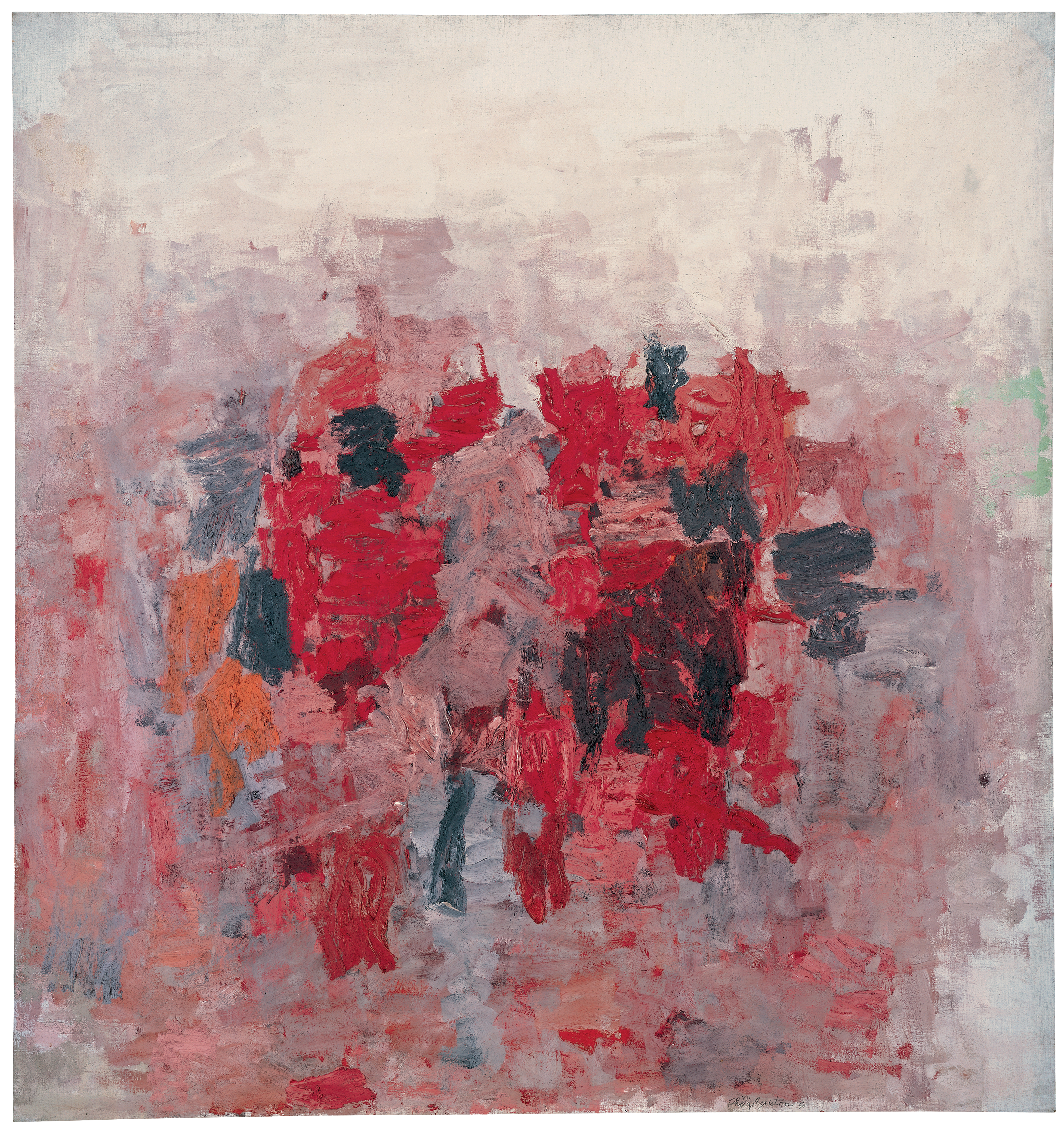Philip Guston grew up in Los Angeles, the youngest of seven children of Russian Jewish immigrants. After high school, Guston moved to New York and worked as a mural artist in the New Deal program, where he painted in a social realist style. By the mid-1950s, he had become an established member of the dominant school of spontaneous, gestural abstract painters. He created large canvases in which vividly colored brushstrokes define a nexus of activity against a muted background.
In 1970, however, Guston shocked the art world with a radical change of style and subject. His new paintings featured cartoonish figures in a lurid palette of pink, red, and black. Some of these later works are allegorical treatments of modern evil (represented, for example, by figures dressed in the hoods of the Ku Klux Klan), while others include autobiographical emblems of Guston’s own childhood struggles, adult life, and artistic process. Though at times he was heavily criticized for this shift away from abstraction, Guston remained devoted to figuration for the remainder of his career.
 Philip GustonFlatlands1970
Philip GustonFlatlands1970 Philip GustonEvidence1970
Philip GustonEvidence1970 Philip GustonBack View1977
Philip GustonBack View1977 Philip GustonLate Fall1963
Philip GustonLate Fall1963 Philip GustonThe Street1956
Philip GustonThe Street1956 Philip GustonProcessional1957
Philip GustonProcessional1957 Philip GustonBrushes1978
Philip GustonBrushes1978 Philip GustonAs It Goes1978
Philip GustonAs It Goes1978 Philip GustonRug III1976
Philip GustonRug III1976 Philip GustonPeppers1976
Philip GustonPeppers1976 Philip GustonThe Room1970
Philip GustonThe Room1970 Philip GustonPile Up1970
Philip GustonPile Up1970 Philip GustonDeparture1963
Philip GustonDeparture1963